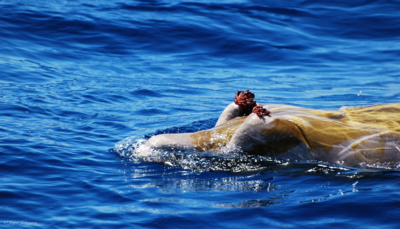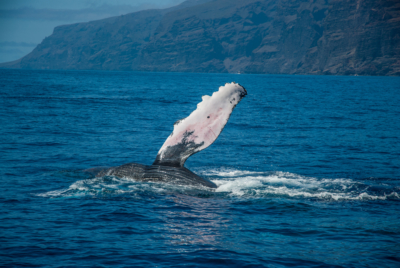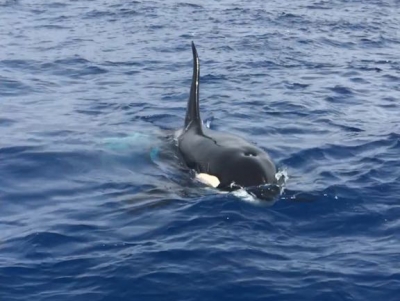Blainville’s beaked whale (Mesoplodon densirostris)
Misnamed Blainville’s beaked whale, it is a species of odontocete cetacean of the family Ziphidae. It is the largest-ranging and most studied species of beaked whale in the genus Mesoplodon. Its name, “densirostris”, means “dense rostrum”. Its body is robust, but less wide than that of other whales in the genus. The head is flat on the front, and its lower jaw is arched, forming a moderately long beak. Adult males are easily recognisable as they have two teeth protruding from their mouths, which are sometimes infested with barnacled crustaceans.

Blue whale (Balaenoptera musculus).
Also known as the blue whale, it is a species of mysticete cetacean of the family Balaenopteridae. Its average size is between 24 and 27 m in length and they weigh between 100 and 120 t,2 although there are records of individuals of almost 30 m in length and 173 t in weight,3 making it the largest animal on planet Earth, not only at present but also the largest ever recorded in history.
The humpback wrasse (Megaptera novaeangliae),
Also called humpback whale, it is a species of mysticete cetacean of the family Balaenopteridae (rorqual whales). It is one of the largest of the rorquals, with adults measuring 12-16 m in length and weighing approximately 36 000 kg. The species has a distinctive body shape, with long pectoral fins and a knobbly head. It is an acrobatic animal, often propelling itself over the surface and then striking the water.

Killer whale (Orcinus orca)
It is a species of odontocete cetacean belonging to the family Delphinidae (oceanic dolphins), which inhabits all the oceans of the planet. It is the largest and only currently recognised species of dolphinid in the genus Orcinus.


